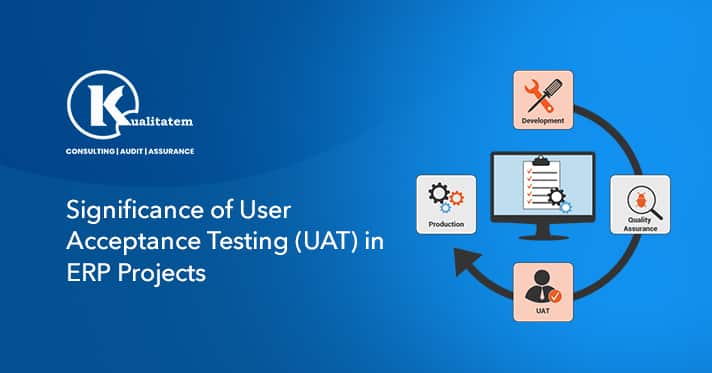Significance of User Acceptance Testing (UAT) in ERP Projects

- March 19, 2020
- HibaSulaiman
Implementation of a new Enterprise Resource Planning (ERP) is not easy. According to statistics, the success rate of ERP projects is roughly around 50%, meaning that around half of them fail. Why? One main reason is the wrong implementation of the ERP process. This is why a smart testing structure is a must.
Application of efficient UAT procedures before launching an ERP project can provide far greater success rates and enable you to provide real-life testing to a project to ensure that it is suitable for the end-user.
In this article, we will specifically focus on the application of UAT in ERP projects, and why is this step so significant.
What is UAT?
UAT is the last stage of software testing after unit, integration, and system testing. Application is created by developers but ultimately, they are to be used by customers. In UAT, the end-user conducts the tests to ensure that the software is suitable for the environment it’s made for. In the case of ERP projects, this step is significant since the software can be incredibly user-specific.
Benefits of Implementing UAT in ERP Projects
Proper user acceptance testing, before the implementation of an ERP project, is crucial. The following are some of the major advantages of implementing UAT in ERP projects.
Involve Users through Testing
End-users understand what output is required from an application and based on their interpretations, developers code. Getting end-users to test your software also means that flaws will be detected before the application rolls into the production environment. Always remember, this step is inevitable, so better run controlled testing rather than handling complaints from live software.
Promotes Adoption of Software
Among major issues with ERP projects is the lack of adoption of the software. This is also why UAT is so important. Not only will it take care of the potential issues with the ERP software, but it will also help with an easier transition into utilizing the program by allowing users to grasp the ERP product. ERP software can be designed specifically towards various aspects of different operations. Involving users can be very helpful in fine-tuning the software to their requirements to promote better adoption and engagement.
Helps Define the Software Goals
One of the issues companies have, when implementing ERP is, is that they expect the product to offer a wide range of solutions instead of focusing on specific areas. Users also need to understand the goals set out for ERP projects to achieve. When end-users test the software, it helps them to understand how the ERP can focus on their goals. Developers can then fine-tune the software to meet these requirements. User testing will allow you to find a list of priorities and a clear guide on where to focus on the final developments.
Helps to Find the Right Product Team
The key to ERP’s success is the right team. An inefficient management team can lead to the downfall of the ERP. Involving users in the testing phase promotes a better understanding of the software and what’s needed to operate is effective. A usability testing company allows developers and users to better understand the kind of management team that is needed and how the software can be improved to work with this.
Find Communication Flaws
ERP projects heavily rely on clear communication just as they require an effective team. The source of the line of communication are employees, project teams, management teams, and software vendors. Poor communication can adversely affect ERP projects in a significant manner. Through UAT, users will allow a better understanding of the kind of communication chain that will be needed for optimal success. This can be developed and structured before the launch of the software. This way, the developers and the team using the program will be ready to allow smoother operation from the outset.
Makes the System Easier to Use
There are two benefits of noting where the ERP can be improved:
- Makes it more efficient
- Creates a simpler version of the software
Proper testing structures allow you to find areas that slow productivity down and track user engagement. Developers can then work to simplify these issues and create a more user-friendly version of the program.
Implementing Project-Based ERPs with UAT
Project-based ERP systems add more focus on people. Relative to ERPs that focus more on good manufacturing, project-based versions place extra emphasis on services. UAT can be particularly useful in efficiently integrating the different processes in the project and focus on people. This allows real users to gain insight into the system, how it can benefit them as individuals and how it works with their operations. If more of a project-based approach is taken by your ERP, then UAT is imperative to find effective and efficient results throughout development.
This kind of ERP is prominent in the following fields:
- Human resource management
- Project-based accounting
- Project management
- Supply chain management
- Customer relationship management
Final Thoughts
It is critical to understand end-user engagement properly when planning to introduce a new project to operations or shifting ERP software. This is where a usability testing company can play a vital role. It adds great value to ERP projects that focus on people who will notably benefit from this approach.











